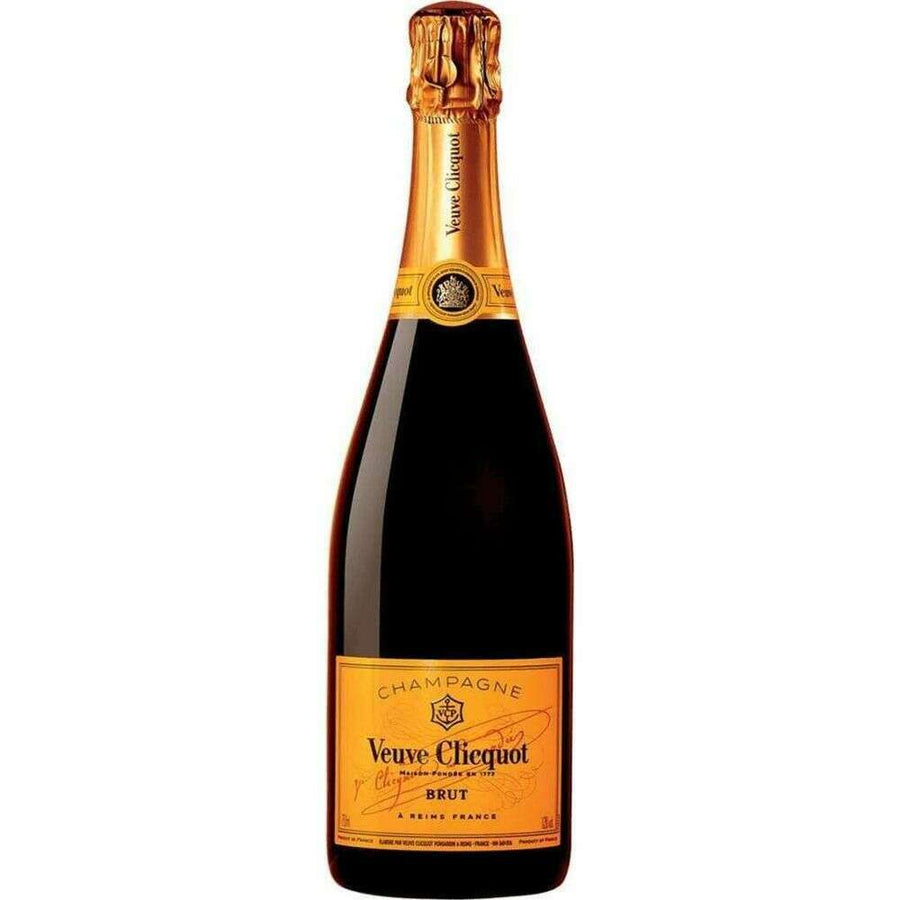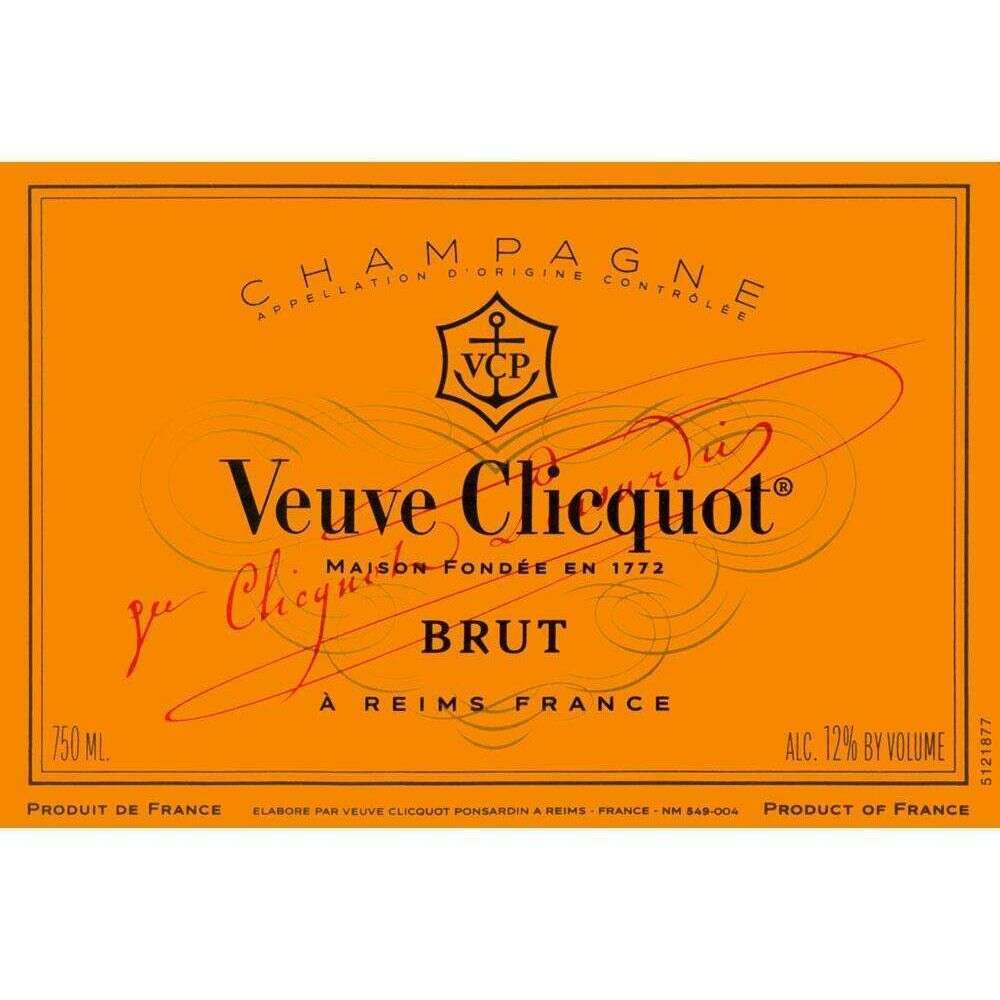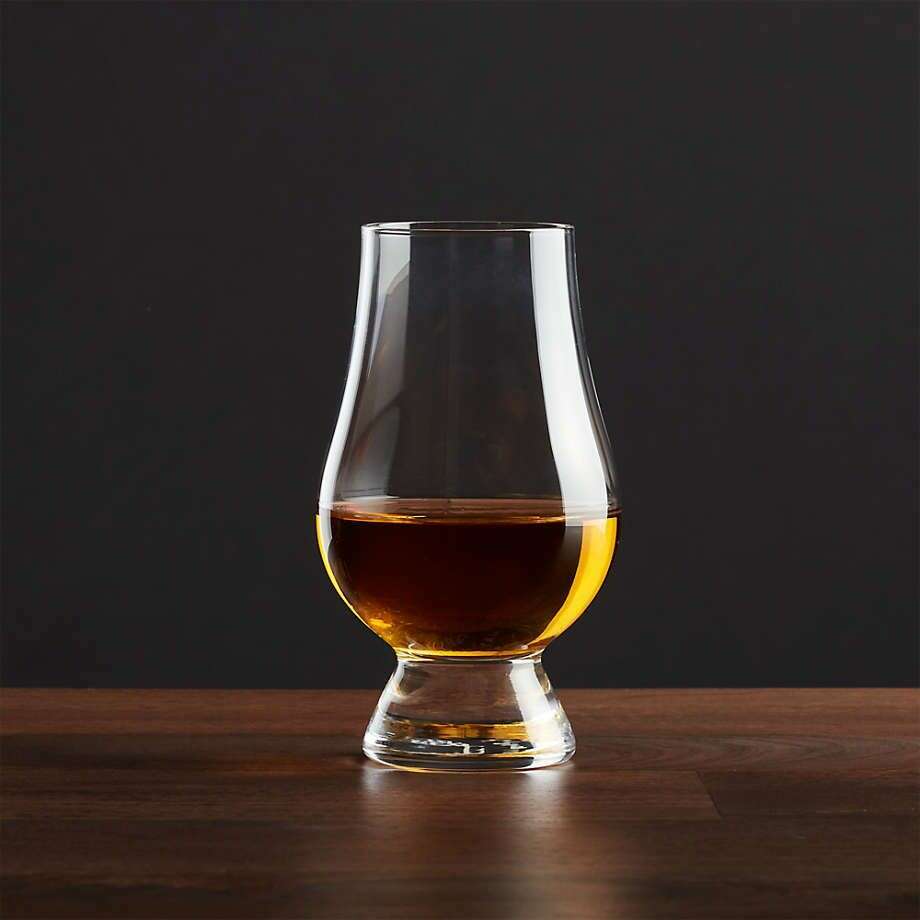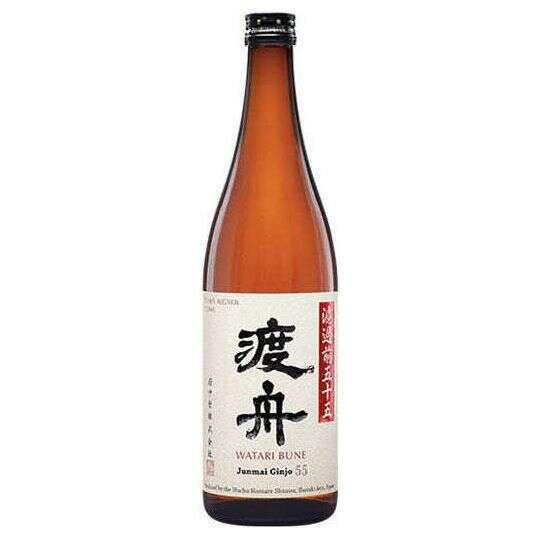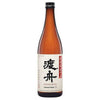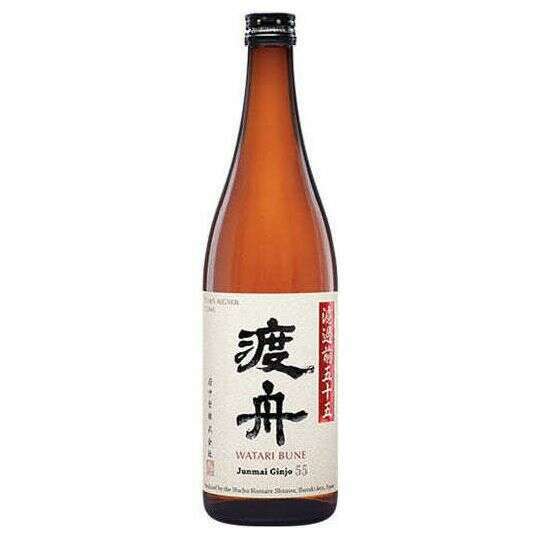
Free Shipping With The BC Shipping Pass
Sign up for unlimited free shipping with our $199/yr Shipping Pass. Takes <5 shipments of your favorite wines and spirits to recoup the cost. Plus get Eagle Rare for $50 with your purchase.
Learn MoreWatari Bune Junmai Ginjo Ferry Boat is the epitome of artisanal sake, crafted with the rare heirloom Wataribune rice, a strain revived after a 60-year extinction. Brewed by the historic Huchu Homare brewery in Ibaraki, Japan, this sake offers a rich tapestry of flavors and aromas. Its signature profile features ripe musk melon, tropical pineapple, and bright white peach, balanced with hints of nuttiness, earthy depth, and a crisp acidity. Polished to perfection at 55%, this sake embodies the elegance of the Junmai Ginjo style with its fruity, floral complexity and delicate effervescence. Best enjoyed chilled, it pairs beautifully with umami-rich delicacies like monkfish liver, duck, or game dishes complemented by berries. Perfect for both connoisseurs and newcomers, Watari Bune Junmai Ginjo Ferry Boat delivers a refined yet vibrant tasting experience.
Process & Profile
Watari Bune Junmai Ginjo Ferry Boat is crafted by the Huchu Homare brewery in Ibaraki, Japan, using the historic Watari Bune rice. Watari Bune rice is the predecessor to Yamadanishiki, revered for its exceptional sake-brewing qualities. The rice is polished to 55%, ensuring the purest flavors are extracted. This junmai ginjo sake is brewed using the "sokujo" method, a fast fermentation process, and Association No. 9 yeast, known for producing fruity and aromatic notes. The result is a brew that reflects legacy, precision, and top-tier craftsmanship.Tasting Notes
Watari Bune Junmai Ginjo boasts a lively and bold profile with a mix of funky yet refreshing flavors. Its aroma bursts with vibrant notes of kumquat, musk melon, Japanese pear, and sour plums. On the palate, expect a playful combination of overripe melon, white peach, and a hint of tropical fruits like pineapple, rounded off with zippy acidity and a clean finish. This sake leaves a bright and fruity impression with every sip.What Makes It Special
What sets Watari Bune Junmai Ginjo apart is its deep connection to Japan's sake heritage. The Watari Bune rice variety was meticulously revived in the 1990s after it had gone extinct for nearly 60 years. From just 14 grams of seedlings, Huchu Homare's dedication brought this varietal back to life, creating a sake that pays homage to tradition. Its balance of fruity complexity and refreshing acidity has made it a favorite among sake enthusiasts, earning its reputation as a cult classic in Japan's sake scene.How to Enjoy
For the best experience, serve Watari Bune Junmai Ginjo slightly chilled. This sake pairs wonderfully with a range of dishes, especially savory or rich cuisines. Consider pairing it with monkfish liver (ankimo), creamy cheeses, duck with berry sauces, or elegant Japanese cuisine. Its versatility also makes it enjoyable on its own, allowing you to fully appreciate its depth and layered flavor profile. Elevate your sake collection with Watari Bune Junmai Ginjo Ferry Boat, a testament to tradition, craftsmanship, and the art of sake brewing.Frequently Asked Questions
What is Watari Bune Junmai Ginjo made from?
Watari Bune Junmai Ginjo is crafted using Watari Bune rice, an heirloom rice variety with historical significance. This rice was revived in the late 1980s and is renowned for its large grains, high shinpaku content, and suitability for producing aromatic and layered sake.
What makes Watari Bune rice special?
Watari Bune rice is an ancestor of the famous Yamada Nishiki, often called the king of sake rice. It produces full-bodied, floral, and citrusy sake. However, it is challenging to cultivate due to its tall stalks and susceptibility to wind and pests, making it rare and exclusive.
How should I serve Watari Bune Junmai Ginjo?
This sake should be served chilled to enjoy its delicate balance of fruity and earthy flavors. Heating it is not recommended, as it could disrupt the intricate aroma and taste profile.
What does Watari Bune Junmai Ginjo taste like?
It has a vibrant and layered flavor profile, with notes of tropical fruits like pineapple and honeydew melon, complemented by a nutty and earthy undertone. It finishes with a crisp, zippy acidity, making it both refreshing and complex.
What food pairs well with Watari Bune Junmai Ginjo?
This sake pairs excellently with umami-rich dishes such as monkfish liver (ankimo), pâté, duck, or game meats served with berries. It can also complement seafood like oysters or sashimi beautifully due to its bright and fruity nature.
What is the brewing process for Watari Bune Junmai Ginjo?
The sake is brewed using the traditional sokujo (fast-brew) method with Association No. 9 yeast. The rice is polished to 55% of its original size to enhance its clean and nuanced flavor profile, classifying it as a Junmai Ginjo sake.
How should Watari Bune Junmai Ginjo be stored?
Store the sake in a cool, dark place to preserve its quality and flavor. Avoid exposing it to heat or sunlight, as these can compromise its characteristics.
Is Watari Bune Junmai Ginjo suitable for beginners?
Yes, its balanced combination of fruity complexity and subtle earthiness makes it approachable for both beginners and experienced sake enthusiasts. It's a versatile sake that's enjoyable both on its own and with food.
What is the alcohol content of Watari Bune Junmai Ginjo?
It has an alcohol content of approximately 15.5%, typical for Junmai Ginjo sake, offering a pleasant balance of flavor and liveliness.
Why is Watari Bune sake considered rare?
Due to the difficulty in cultivating Watari Bune rice and its limited annual production, sake made from this rice strain, such as Watari Bune Junmai Ginjo, is considered rare and highly prized by sake enthusiasts.
Unfortunately, we're unable to ship to PO Boxes and APO addresses.
Adult signature (21+) required upon delivery.


